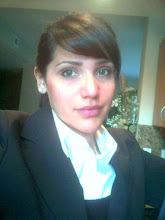"Businesses today exist in an era in which it's nearly impossible to escape the likelihood of being evaluated." said Linda Shea, senior vice president at Opinion Research.
I found a great article from Mark Thomson, and he highlights three communication strategies that he has found relevant to building a strong brand story:
Clarity: First, make sure you know what you wish to say. This is the content of your brand; who you are, what you do, who you do it for, why it matters to them, and how it’s different from anyone else in the marketplace.
Consistency: Make sure you say it (and show it) in the same way, wherever and with whomever you do business. This is how all your communications, actions and accomplishments start to work together, building up into the unity that is your brand presence in the marketplace.
Character: This is where your personality shines through. It’s what brings you to life at an emotional level. It’s what makes people want to connect with you. It’s what turns necessity into desire. For example, it’s what turns the statement, “I need a new cell phone, and” into “I want that new cell phone.
Marketing is nothing more than telling your story in an effective way that embeds your identity into the minds of your audience, connecting and communicating who you are, what you do, and why your audience should be doing it with you. Now, think about our company and
- Describe what it is you do
- What does your brand provide to those you serve
- Why it matters










